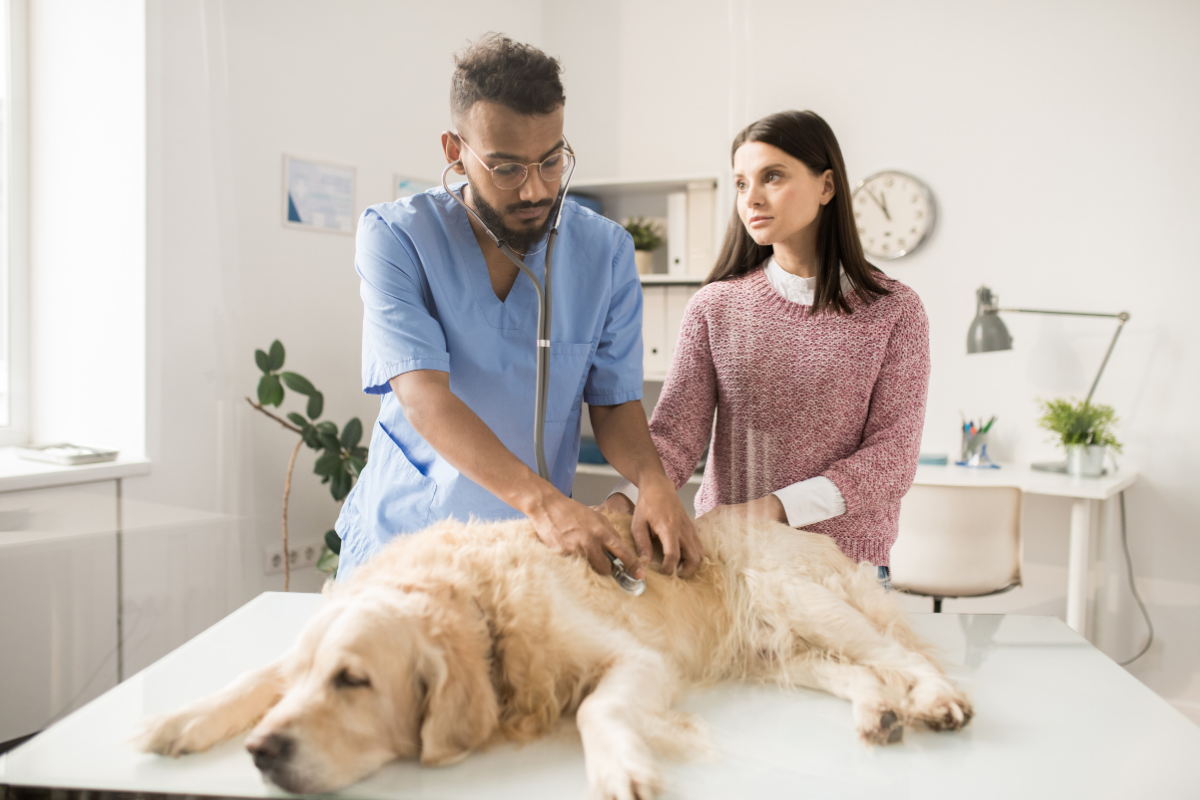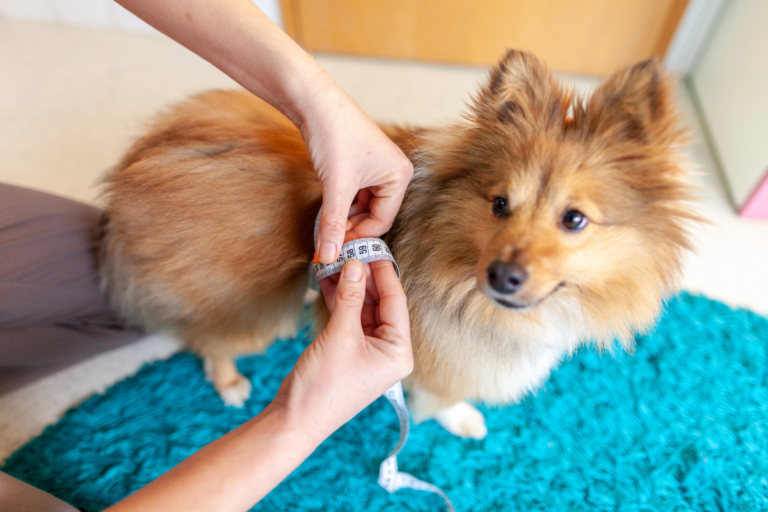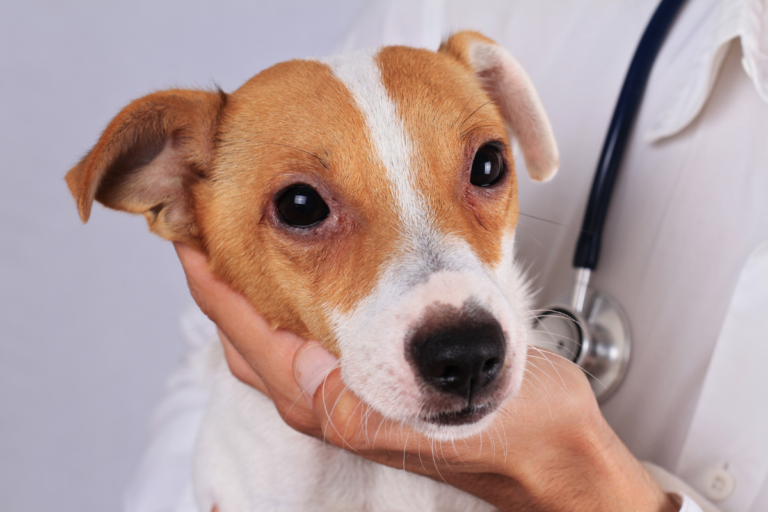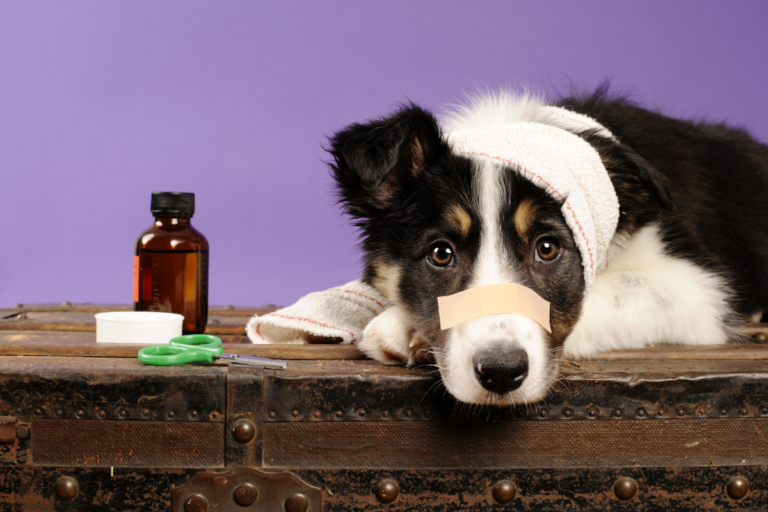Detect, Act, Protect: Recognizing Bloat Symptoms in Our Dogs
Understanding Bloat in Dogs
What is Bloat in Dogs?
Bloat in dogs, or as the vets call it, GDV (Gastric Dilatation-Volvulus), is when a pup’s belly gets all puffed up with gas, food, or water, and then decides to play a twisted game of Twister. Large or deep-chested furballs are especially prone to this tummy trouble, though any four-legged friend can fall victim. When the stomach takes a nasty turn, it can bring about devastating consequences, like stomach splits or spleen damage (PetMD).
Why does this happen? Well, Wolfing down chow at lightning speed, eating too much, guzzling H2O like there’s no tomorrow, being stressed out, or simply being a certain breed can be bloat culprits. Leave bloat unchecked, and it spirals into a sticky, fatal mess, so drop everything and rush to a vet if it strikes.
| What Causes Bloat | Details |
|---|---|
| Gobbling Food Too Fast | Air sneaks into the belly, setting the stage for bloat |
| Mega Meals | A tummy-stretching feast that sets up bloat |
| Chugging Water Fast | Gulping too much water can stir bloat |
| Under Pressure | Stress or anxiety might trigger bloat |
| Breeds Born for Bloat | Big, deep-chested canines face higher risks |
Wanna get breed-specific? Check our scoop on breeds at higher risk.
Differences Between Bloat and GDV
We often throw around “bloat” and “GDV” like they’re the same, but there’s a key distinction in these belly dramas:
- Bloat: The curtain-raiser where the belly’s filled to the brim with gas, munchies, or liquid.
- GDV (Gastric Dilatation-Volvulus): The serious sequel where the stomach goes for a twist, stopping blood flow and trapping the bad stuff inside.
Comparison Between Bloat and GDV
| Stage | What’s Up | What You Gotta Do |
|---|---|---|
| Bloat | Belly is all puffed up with gas, grub, or drink | Keep a close eye, seek vet guidance |
| GDV | Belly twists like a knot, blood flow hits pause | Dash for emergency vet help, pronto |
Knowing the ins and outs of bloat versus GDV means we can act fast and smart for Fido. Need a pep talk on emergency vet visits? We got the deets to help you take swift action.
Symptoms and Risk Factors
Spotting the signs of bloat in dogs is vital to keeping them healthy and safe. By understanding what these signs mean and the things that increase the risk of bloat, we can act quickly to protect our pups.
Recognizing Bloat Symptoms
Bloat in dogs can get serious fast, so it’s important to take action right away. Here are some red flags to keep an eye on (PetMD):
- Trying to throw up but not bringing anything up (dry-heaving)
- Belly looks bigger than usual
- Suddenly acting anxious, walking around a lot, and can’t seem to settle down
- Drooling more than normal
- Breathing fast or having a rapid heartbeat
- Seeming uncomfortable and not wanting to do their regular activities
- Falling over or unable to stand
| Symptom | Description |
|---|---|
| Dry-heaving | Trying to vomit but coming up empty |
| Abdominal Swelling | Noticeably bigger belly area |
| Anxiety | Sudden restlessness, pacing, and stress signs |
| Drooling | Lots of saliva pouring out |
| Panting | Fast breathing often showing discomfort |
| Collapse | Suddenly can’t stand or move around |
It’s important to know what’s what when your dog isn’t feeling well. For example, bloat comes with a swollen belly and not being able to vomit, while GDV (Gastric Dilatation-Volvulus) adds a lot of drooling and rapidly worsening belly swelling (Blue Cross).
For more on what’s going on with dog’s health and what to watch out for, check out dog diseases and symptoms.
Factors Contributing to Bloat
There’s a bunch of stuff that can make a dog more likely to get bloat. Knowing these can help us put up our defenses and keep this nasty condition at bay (PetMD).
| Contributing Factor | Risk Description |
|---|---|
| Large Meals | Serving big food portions |
| Diet Type | Eating lots of fatty stuff |
| Feeding Frequency | Once-a-day feeding instead of many smaller meals |
| Eating Habits | Gobbling food or eating from bowls that are raised |
| Activity Timing | Working out right after eating |
| Breed Type | Some breeds like Great Danes and German Shepherds are more at risk |
| Age and Gender | Older and male dogs have a higher risk |
Some pooches are more likely to deal with bloat. German Shepherds, Great Danes, Saint Bernards, and other deep-chested breeds are more susceptible. Mutts with these features aren’t off the hook either. Plus, weight and age matter—older and skinnier dogs are more likely to face this issue.
To learn more about breed-specific health concerns, take a look at German Shepherd hip troubles and French Bulldog health issues.
By staying alert to these risk factors and catching the symptoms early, we can take action to protect our pups from bloat. For more practical advice on keeping your dog safe, head to our section on Reducing Risks.
Diagnosis and Treatment
Okay, so let’s get real about doggy tummy flips. Quick action is key when we suspect bloat in our furry friends. Having a handle on how vets tackle this helps us jump in pronto and keep those wagging tails happy.
Veterinarian Diagnosis Methods
Our vet pals have some neat tricks up their sleeves to figure out if our dogs are dealing with bloat, and how bad it is. Mainly, they use:
-
Abdominal X-rays: This is the magic picture box that shows if Fido’s tummy is filled with gas or twisted up like a pretzel, officially called Gastric Dilatation-Volvulus (fancy, right?). It gives the vet a solid look at what’s going on inside.
-
Blood Work: A bit of the ol’ needle poke gives clues about our pup’s overall vibes. This blood scoop can point out if they’re in shock or juggling other serious issues that need sorting pronto.
With these tools, vets can whip up a plan that suits our dog’s situation perfectly.
Approaches to Treating Bloat
Depending on what’s happening inside our dog’s tum-tum, the fix-it plan might include:
-
Stabilizing the Pup: First things first, help our doggy feel steady. That usually means IV fluids and meds to keep things like blood pressure ticking along nicely.
-
Decompression: Gotta release that nasty gas ASAP! Vets might use a special tube or a needle right into the belly to let it all out.
-
Surgery (if Twists Happen): If it’s a case of GDV, they’ll need to untie those tummy knots through surgery. And, they’ll stitch the stomach to the wall to keep it from happening again. It works like 95% of the time!
-
Recovery Hug Time: Post-surgery, love and care are crucial. IV fluids, meds for pain, and lots of watchful eyes ensure everything heals up just fine.
These steps make sure our dogs have the best chance of bouncing back from a bloat attack.
| Treatment Part | Purpose | How It Works |
|---|---|---|
| Stabilization | Keeps pressure steady and heart happy | IV Fluids go in |
| Decompression | Bye-bye gas, hello relief | Tube or needle magic |
| Surgery | Fix those twists, prevent future flips | Tie-it-up Gastropexy |
| Supportive Care | Help heal, manage ouchies | Pain meds and TLC |
We’ve got more deets on what might cause bloat if you want to prevent this mess in the first place, check here: causes of bloat. Sniffing out these factors means we can dodge bloatsville altogether.
Lucky for us, avoidance is a plan. Regular vet visits and staying alert to sniffles like female dog bladder issues and other doggy ailments go a long way for a healthy doggo. If your dog’s more prone to GDV, maybe get ahead with preventive surgeries and a close eye on their bowl and stroll routines.
Spot the signs, know how vets handle it, and stay in the treatment loop. This way, we make sure our woofers get the urgent help they need. For specifics on bouncing back after surgery, peek at post-surgery love and care.
Prevention Strategies
Spotting bloat in dogs pronto and acting fast can keep them safe and sound. Let’s check out what we can do:
Risk Reduction Measures
Lots of things can make bloat more likely, from chow habits to family history. Tackling these can lower the chances your furry buddy runs into trouble:
- Feeding practices: Ditch the super-size meals. Instead, go for small bites more often. Big dogs should chill while dining, so hook them up with those slow chow bowls.
- Water intake: They need water, sure, but don’t let them guzzle gallons in one go, especially during chow time.
- Food type: Watch out for dry food where fats and oils hog the top spots in the ingredients.
- Exercise timing: Let them cool their paws before running wild right after they eat.
- Eating from ground level: Serve up their meals ground-level style, not on those fancy raised bowls to give bloat the boot.
- Genetic considerations: Know your dog’s family lineup. Some dogs, especially the broad-chested beauts, are bloat magnets. Hit up your vet for tips if your dog fits the profile.
Importance of Immediate Veterinary Attention
Bloat isn’t a wait-and-see deal; it’s a mad dash to the vet. Getting that urgency can legit save your pup:
- Immediate Action: Keep an eye out for odd stuff: dry-heaving, puffed-up belly, sudden worry, pacing, panting, dropping down, or fast-beating heart (PetMD).
- Veterinary Diagnosis: The vet might do x-rays or exams to suss out bloat fast. The peeps at the Veterinary Medical Center of CNY bang on about the clock; early treatment rules the day.
- Postoperative Care: Post-surgery, they’ll need TLC, like IV fluids and pain relief (The Vets).
Check our pieces on dog illnesses and dog diseases and symptoms for all-encompassing insights on dodging and dealing with doggy health drama. If you’re dealing with specific breeds, peek at german shepherd health problems or bulldog health problems.
Being on the ball and nailing these steps keeps our pups wagging their tails, living their best lives.
Breed-Specific Considerations
Knowing the ins and outs of breed-related risks and how to prevent bloat can keep our furry pals from facing serious health threats. Some dog breeds just have a knack for getting bloat because of their size and anatomy.
Breeds at Higher Risk
Bloat tends to show up more often in big dogs with deep chests. While all dogs aren’t entirely off the hook, these little troublemakers are more prone to it:
- Great Danes
- German Shepherds
- Standard Poodles
- St Bernards
- Weimaraners
- Labradors (Blue Cross)
Their roomy chests make them bloat magnets. Toss in factors like scarfing down food, a belly too full, chugging too much water fast, and stress, and you’ve got a cocktail for bloat city (The Vets).
Preventative Measures for Susceptible Breeds
Stopping bloat before it starts in these breeds is key. Here’s what we can do:
- Elevated Feeding Stations: Using these makes mealtime comfy and less air-sucking when they munch.
- Slow Feeder Bowls: These bowls turn any meal into a slow ride, stopping them from eating like they’ve never seen food before.
- Multiple Small Meals: Spacing out meals helps avoid a belly that blows up like a balloon.
- Limiting Water After Meals: Keep water sips light after eating to dodge rapid belly expansion.
- Avoiding Vigorous Exercise Post-Meal: Waiting an hour or so post-chow before zoomies helps keep bloat at bay.
For those breeds that love flirting with danger, getting a gastropexy might be on the veterinarian’s to-do list while they’re still pups. This surgery puts the stomach on lockdown, meaning it can’t twist itself into trouble, a major blessing against Gastric Dilatation-Volvulus (GDV), which is bloat on steroids (Blue Cross).
| Breed | Relative Risk | Preventative Measures (Examples) |
|---|---|---|
| Great Dane | High | Slow feeder bowls, gastropexy |
| German Shepherd | High | Multiple small meals, monitoring |
| Standard Poodle | High | Elevated feeders |
| St Bernard | High | Avoid vigorous exercise post-meal |
| Weimaraner | High | Limited water intake post-meal |
| Labrador | High | Slow feeder bowls |
With these tricks up our sleeve, we can lessen the chance of bloat wreaking havoc on our dogs. If you’re curious about keeping your dogs happy and healthy, don’t miss out on our reads about dog diseases, dog diabetes symptoms, and dog heart disease. Keeping our pups safe starts with us being smart and proactive!
Surgical Intervention and Recovery
Surgical Procedures for GDV
Handling Gastric Dilatation Volvulus (GDV) in our furry buddies? Surgery’s the go-to fix. The big aim is to stop stress on the heart, let out gas, fix that stomach twist, and check for any organ damage (PetMD).
Here’s a peek into the surgical steps:
- Shock Stabilization: First things first—get Fido ready for anesthesia and the actual procedure.
- Decompression: Pop a tube down the throat to let the gas escape and ease the pressure cooker situation.
- Surgical Correction: The vet untangles the twisted stomach like a pro, checking for damage and snipping away any bad bits.
- Gastropexy: To keep the drama from repeating, the stomach gets a bit of sewing to the belly wall—95% effective at saying “no” to future GDV attacks (Veterinary Medical Center of CNY).
Post-Surgery Care and Monitoring
After the surgical fix, it’s all about making sure our pooch is comfy and on the mend. This means sticking around the hospital with the vet squad keeping a close eye. So, what’s involved? Let’s get into it!
Hospitalization
- Pain Management: Keep the pain at bay with a solid lineup of meds so our buddy feels comfy.
- IV Fluids: Keep ’em hydrated and boost their recovery mojo.
- Close Monitoring: Catching complications like arrhythmias or blood clots before they cause trouble.
Monitoring for Complications
- Arrhythmias: If the heart starts playing its own tune, it’s serious business and needs quick attention.
- Blood Clots: Keeping an eye for those nasty clot monsters that can really mess up recovery.
- Infection Control: Be the cleanliness police at the incision site and stay alert for sneaky infections.
| Post-Surgery Care | Description |
|---|---|
| Pain Management | Using the right meds to ease pain |
| IV Fluids | Keeping hydration and electrolytes balanced |
| Arrhythmia Monitoring | Constant ECG checks for heart hiccups |
| Blood Clot Monitoring | Regular lookout to ward off clots |
| Infection Control | Maintaining incision cleanliness and catching infections early |
The success of taking our four-legged buddy through surgery is all about those watchful eyes and fast responses to any bump in the recovery road. Managing these challenges can truly crank up the chances of bouncing back. For insights into keeping your dog’s ticker in good shape, check out our reads on reducing risks for your dog and dog diseases.
Being a top-notch dog parent isn’t just about belly rubs and fetch games—it’s also about staying savvy about health risks and shielding our furballs from harm. Knowing how to navigate GDV surgery and post-op care can tip the scales in favor of keeping them chipper. Need more tips on handling and stopping health hiccups? Check our guides on dog diseases and symptoms, symptoms of Addison’s disease in dogs, and female dog bladder infection symptoms.






